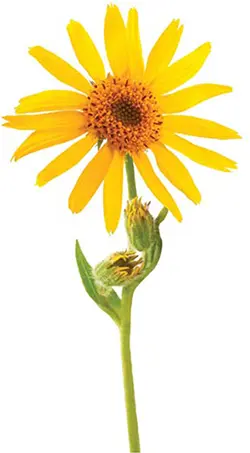
Discovering the Origins
Arnica is a perennial herb from the Asteraceae or Compositae family, which includes asters, daisies, and sunflowers. The species Arnica montana, with its distinctive yellow or orange flowers, is native to Europe and Siberia. This species, along with others from North America, especially in mountainous areas, are used medicinally.
Historical Significance and Lore
Known by nicknames like wolf’s bane and mountain tobacco, Arnica has been valued medicinally across many cultures, particularly in Germany. The notable German writer Johann Wolfgang von Goethe praised Arnica for its life-saving qualities during his battle with angina.
Healing Uses
Arnica, particularly its flowers and roots, is used in various forms for healing. Dried flowers in bathwater alleviate aches, while arnica oil helps with muscle soreness and inflammation. Compresses of dried flowers and roots aid in healing wounds, but arnica should be used externally or under professional guidance due to potential side effects.
Magical Uses
Arnica flowers are believed to increase psychic powers and are used in harvest rituals for crop fertility. For protection, boiling the dried flowers to make tea and sprinkling it around doorways and windows is a common practice.
Personal and Spiritual Growth
Arnica essence is useful in meditation to release emotional pain from trauma, gaining wisdom and achieving balance. Its essential oil, used in aromatherapy, promotes positivity and gratitude, aiding in emotional and spiritual well-being.
